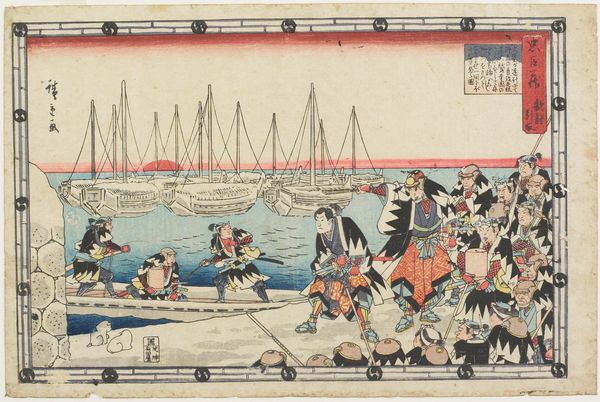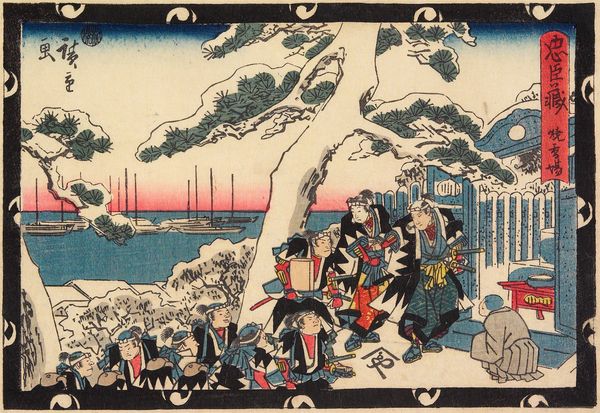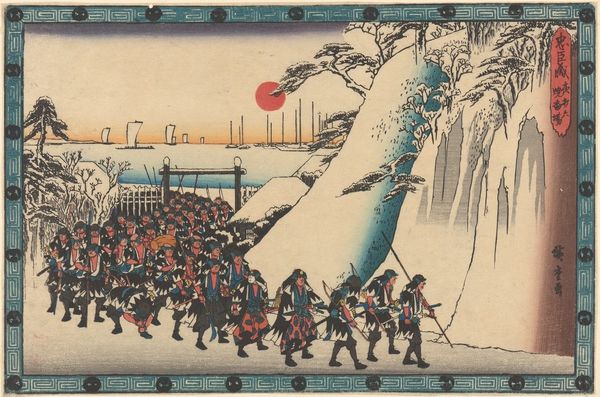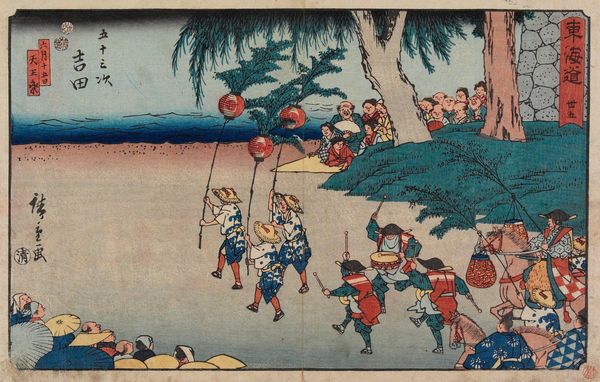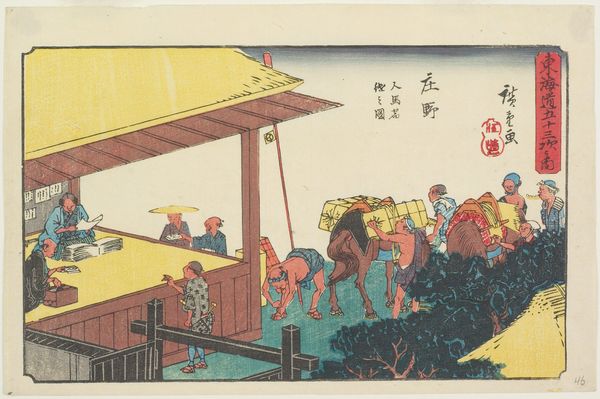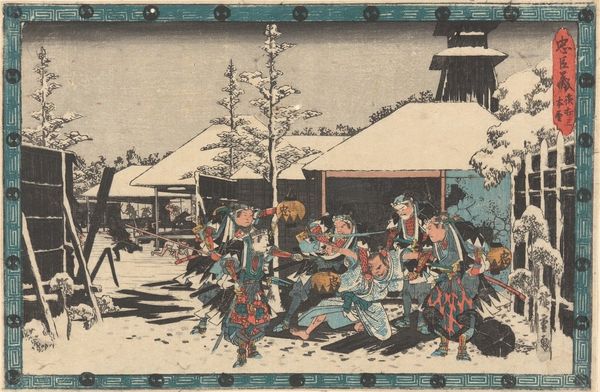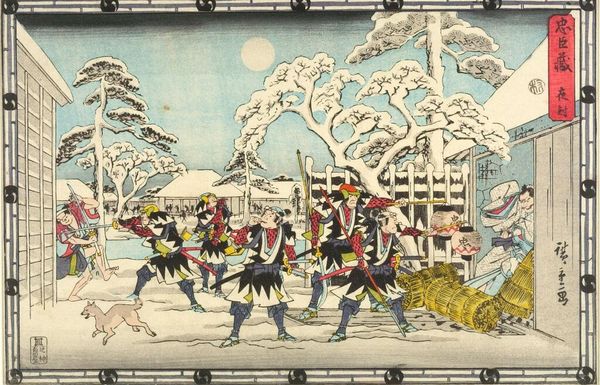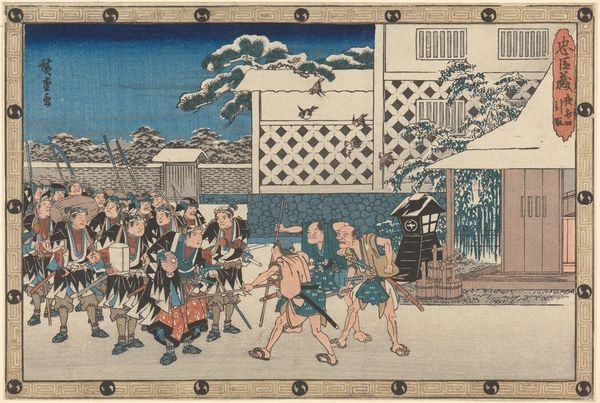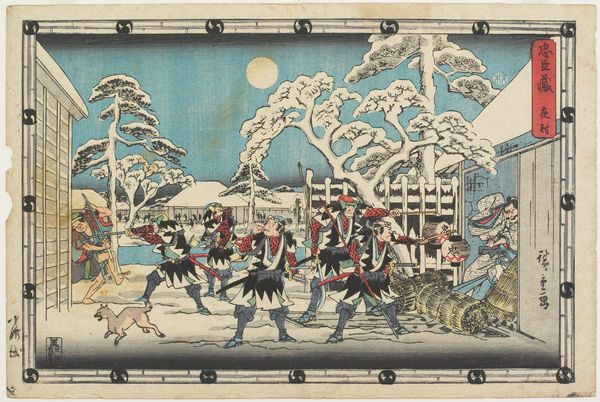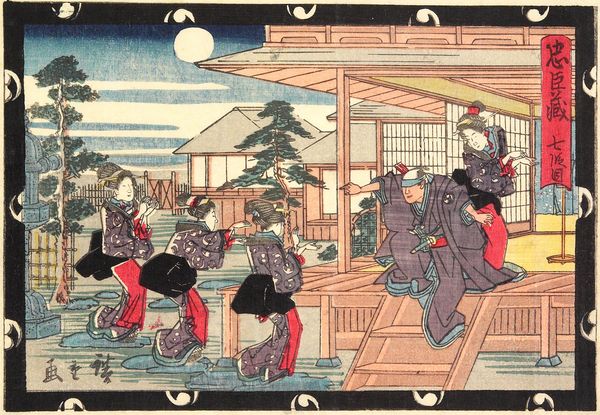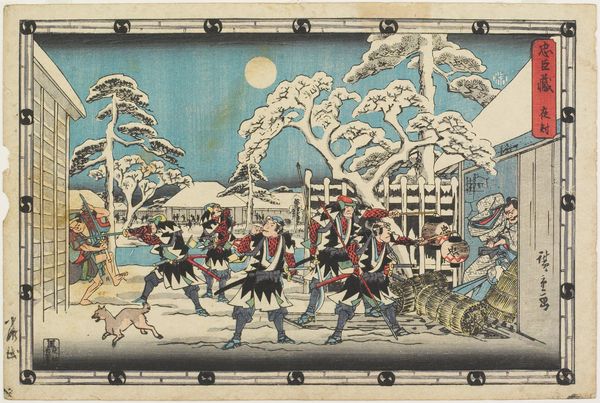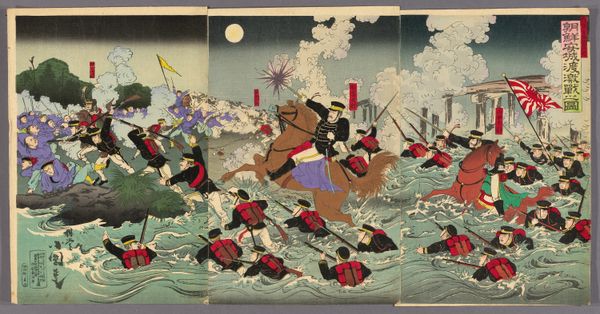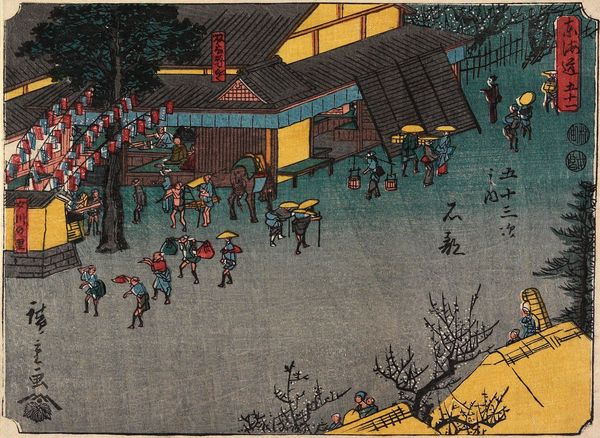
print, ink, woodblock-print
#
narrative-art
# print
#
asian-art
#
landscape
#
ukiyo-e
#
ink
#
woodblock-print
Dimensions: 6 × 8 3/4 in. (15.3 × 22.2 cm) (image, horizontal chūban)
Copyright: Public Domain
Curator: Before us is Utagawa Hiroshige's "Night Attack," a woodblock print made sometime between 1843 and 1846, part of the collection here at the Minneapolis Institute of Art. The scene depicts a dramatic raid under the cover of darkness. What strikes you most when you look at this? Editor: It's the energy! I see these warriors poised between action and anticipation. Look at the red gate—such a contrast to the icy, quiet night suggested by the blues in the sky and water. There's so much contained potential about to be released. Curator: Hiroshige, as a master of ukiyo-e, presents a popularized historical narrative here. It most likely depicts the Akō vendetta, a significant event that resonated deeply within Edo society and the samurai culture. The print itself functions as a piece of socio-political commentary, shaping public memory. Editor: Agreed, it's propaganda of a sort. I'm fascinated by the process; by carefully carving woodblocks, he translates dynamic action into distinct visual information to create identical impressions ad infinitum. Note how the individual grain of the wood informs every line and plane within the composition. It speaks of repetitive labor as part of cultural dissemination of imagery and narratives. Curator: Yes, the means of production directly relate to its dissemination and the engraving allows Hiroshige to make visible the values associated with loyalty, sacrifice, and retribution held sacred within the feudal system. Editor: I’m also intrigued by the hammers that several characters are holding in this action; those golden sledgehammers that pop from the red and white hues are perhaps less violent than katana swords. Were these instruments part of the raid? Or are these exaggerations included to illustrate something more specific than their task? Curator: Well, those visual elements can all be interpreted through a historical lens to represent, among many potential options, the righteousness and strength required for such an undertaking to reclaim what was stolen in spirit, if not substance. But more generally, there seems to be no doubt about the effectiveness this print may have had at promoting or furthering interest and support in related historical material. Editor: Ultimately, this work presents a dramatic clash between cultural values. What started for me with color and motion ends up prompting deep historical and cultural musings about creation, distribution and meaning.
Comments
No comments
Be the first to comment and join the conversation on the ultimate creative platform.
